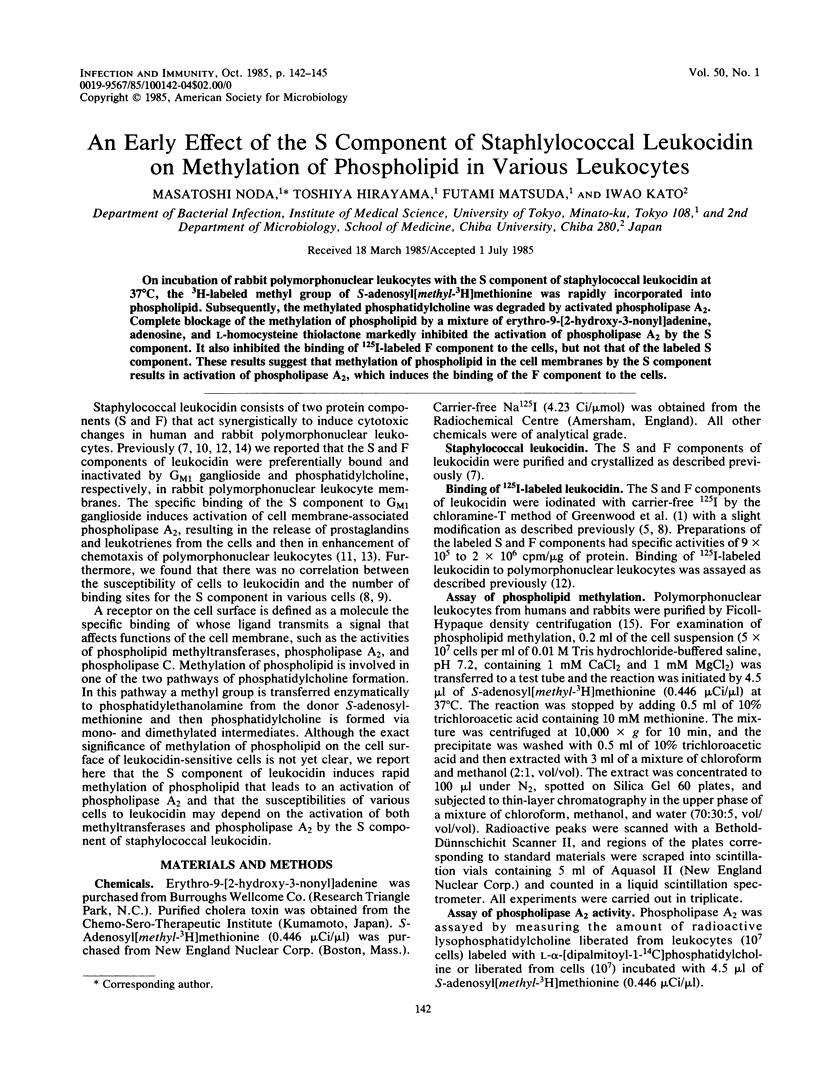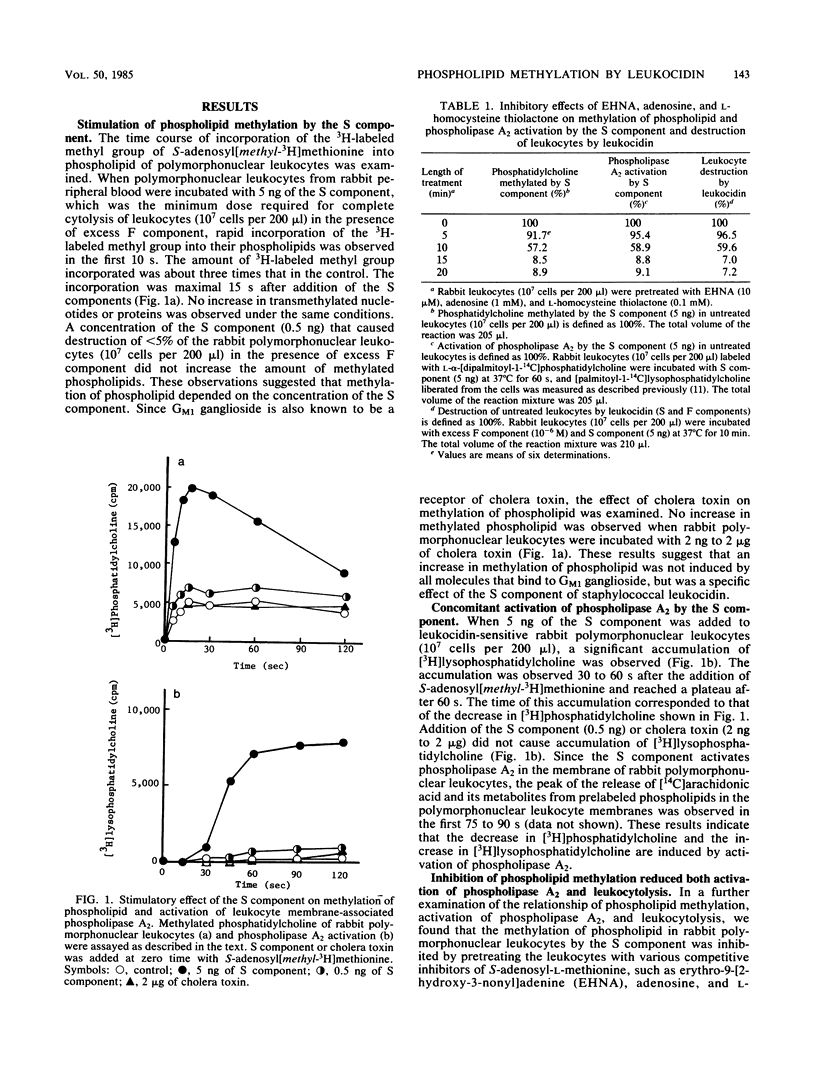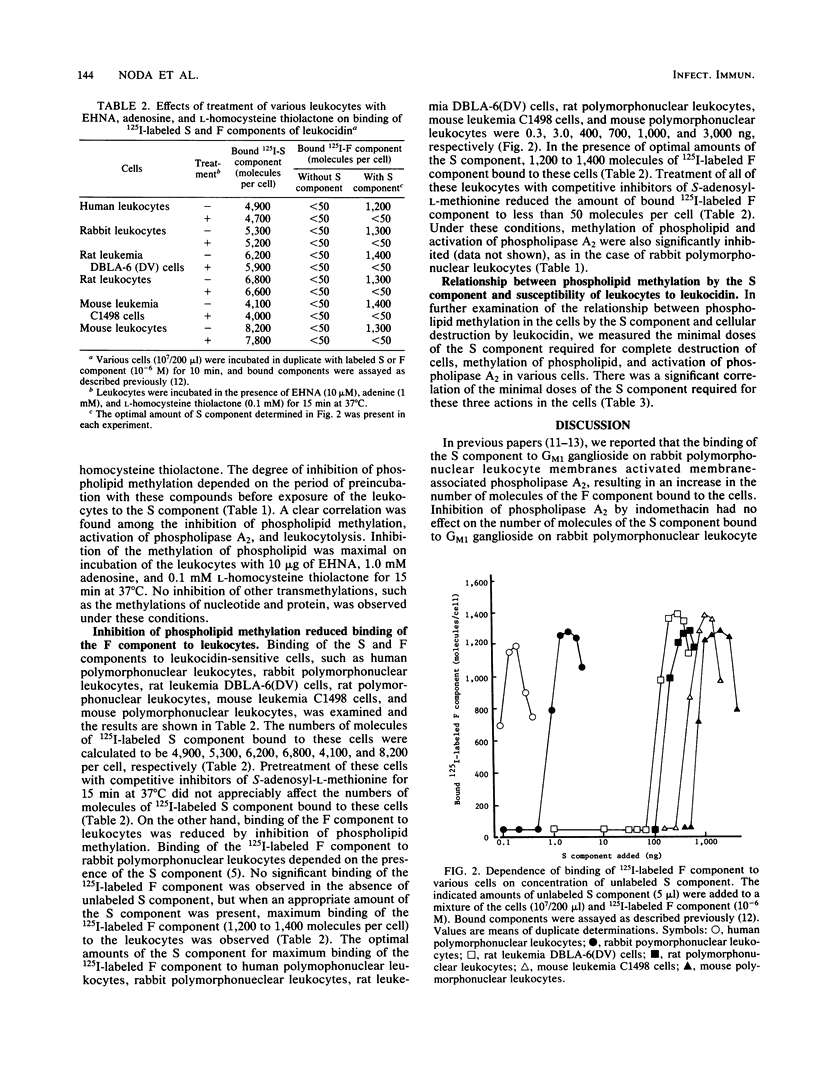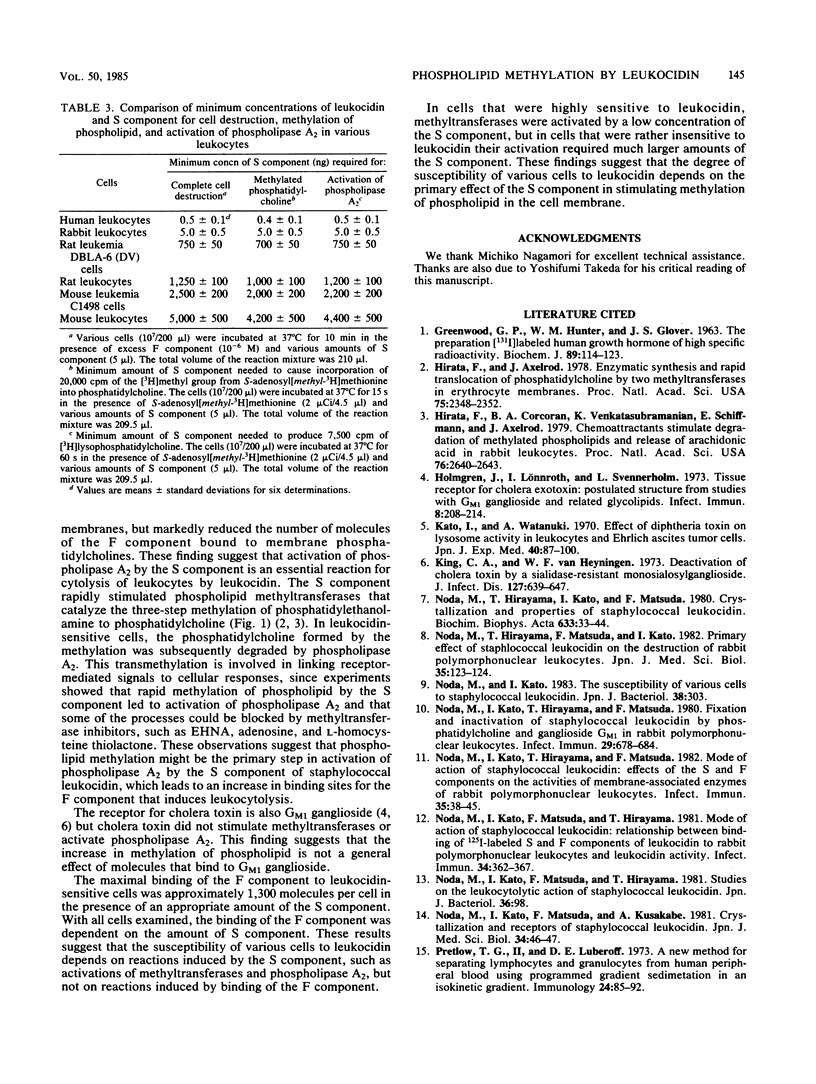Abstract
On incubation of rabbit polymorphonuclear leukocytes with the S component of staphylococcal leukocidin at 37 degrees C, the 3H-labeled methyl group of S-adenosyl[methyl-3H]methionine was rapidly incorporated into phospholipid. Subsequently, the methylated phosphatidylcholine was degraded by activated phospholipase A2. Complete blockage of the methylation of phospholipid by a mixture of erythro-9-[2-hydroxy-3-nonyl]adenine, adenosine, and L-homocysteine thiolactone markedly inhibited the activation of phospholipase A2 by the S component. It also inhibited the binding of 125I-labeled F component to the cells, but not that of the labeled S component. These results suggest that methylation of phospholipid in the cell membranes by the S component results in activation of phospholipase A2, which induces the binding of the F component to the cells.
Full text
PDF



Selected References
These references are in PubMed. This may not be the complete list of references from this article.
- GREENWOOD F. C., HUNTER W. M., GLOVER J. S. THE PREPARATION OF I-131-LABELLED HUMAN GROWTH HORMONE OF HIGH SPECIFIC RADIOACTIVITY. Biochem J. 1963 Oct;89:114–123. doi: 10.1042/bj0890114. [DOI] [PMC free article] [PubMed] [Google Scholar]
- Hirata F., Axelrod J. Enzymatic synthesis and rapid translocation of phosphatidylcholine by two methyltransferases in erythrocyte membranes. Proc Natl Acad Sci U S A. 1978 May;75(5):2348–2352. doi: 10.1073/pnas.75.5.2348. [DOI] [PMC free article] [PubMed] [Google Scholar]
- Hirata F., Corcoran B. A., Venkatasubramanian K., Schiffmann E., Axelrod J. Chemoattractants stimulate degradation of methylated phospholipids and release of arachidonic acid in rabbit leukocytes. Proc Natl Acad Sci U S A. 1979 Jun;76(6):2640–2643. doi: 10.1073/pnas.76.6.2640. [DOI] [PMC free article] [PubMed] [Google Scholar]
- Holmgren J., Lönnroth I., Svennerholm L. Tissue receptor for cholera exotoxin: postulated structure from studies with GM1 ganglioside and related glycolipids. Infect Immun. 1973 Aug;8(2):208–214. doi: 10.1128/iai.8.2.208-214.1973. [DOI] [PMC free article] [PubMed] [Google Scholar]
- Kato I., Watanuki A. Effect of diphtheria toxin on lysosome activity in leukocytes and Ehrlich ascites tumor cells. Jpn J Exp Med. 1970 Apr;40(2):87–100. [PubMed] [Google Scholar]
- King C. A., Van Heyningen W. E. Deactivation of cholera toxin by a sialidase-resistant monosialosylganglioside. J Infect Dis. 1973 Jun;127(6):639–647. doi: 10.1093/infdis/127.6.639. [DOI] [PubMed] [Google Scholar]
- Noda M., Hirayama T., Kato I., Matsuda F. Crystallization and properties of staphylococcal leukocidin. Biochim Biophys Acta. 1980 Nov 17;633(1):33–44. doi: 10.1016/0304-4165(80)90035-5. [DOI] [PubMed] [Google Scholar]
- Noda M., Kato I., Hirayama T., Matsuda F. Fixation and inactivation of staphylococcal leukocidin by phosphatidylcholine and ganglioside GM1 in rabbit polymorphonuclear leukocytes. Infect Immun. 1980 Aug;29(2):678–684. doi: 10.1128/iai.29.2.678-684.1980. [DOI] [PMC free article] [PubMed] [Google Scholar]
- Noda M., Kato I., Hirayama T., Matsuda F. Mode of action of staphylococcal leukocidin: effects of the S and F components on the activities of membrane-associated enzymes of rabbit polymorphonuclear leukocytes. Infect Immun. 1982 Jan;35(1):38–45. doi: 10.1128/iai.35.1.38-45.1982. [DOI] [PMC free article] [PubMed] [Google Scholar]
- Noda M., Kato I., Matsuda F., Hirayama T. Mode of action of staphylococcal leukocidin: relationship between binding of 125I-labeled S and F components of leukocidin to rabbit polymorphonuclear leukocytes and leukocidin activity. Infect Immun. 1981 Nov;34(2):362–367. doi: 10.1128/iai.34.2.362-367.1981. [DOI] [PMC free article] [PubMed] [Google Scholar]
- Pretlow T. G., 2nd, Luberoff D. E. A new method for separating lymphocytes and granulocytes from human peripheral blood using programmed gradient sedimentation in an isokinetic gradient. Immunology. 1973 Jan;24(1):85–92. [PMC free article] [PubMed] [Google Scholar]


